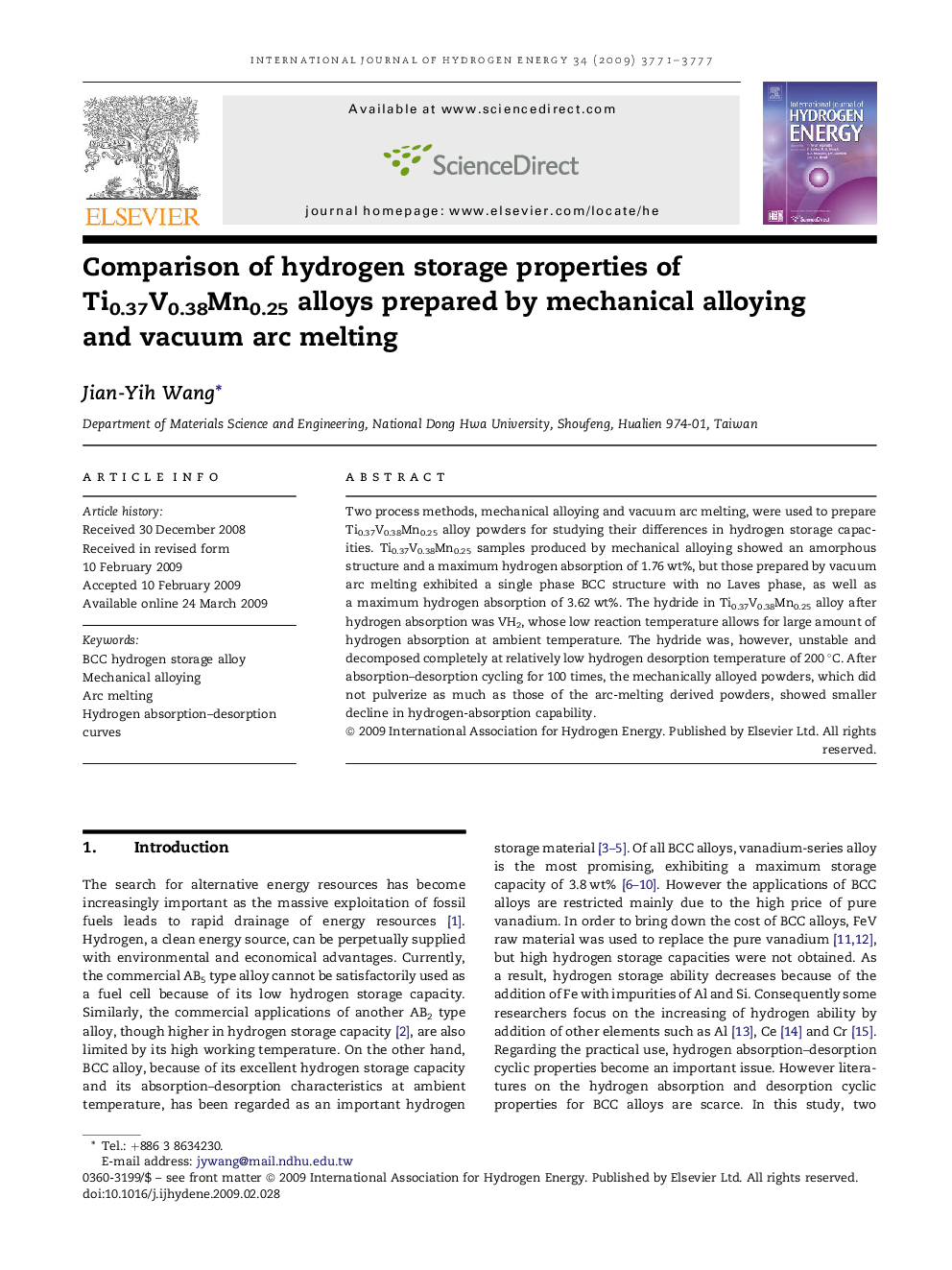| Article ID | Journal | Published Year | Pages | File Type |
|---|---|---|---|---|
| 1279007 | International Journal of Hydrogen Energy | 2009 | 7 Pages |
Two process methods, mechanical alloying and vacuum arc melting, were used to prepare Ti0.37V0.38Mn0.25 alloy powders for studying their differences in hydrogen storage capacities. Ti0.37V0.38Mn0.25 samples produced by mechanical alloying showed an amorphous structure and a maximum hydrogen absorption of 1.76 wt%, but those prepared by vacuum arc melting exhibited a single phase BCC structure with no Laves phase, as well as a maximum hydrogen absorption of 3.62 wt%. The hydride in Ti0.37V0.38Mn0.25 alloy after hydrogen absorption was VH2, whose low reaction temperature allows for large amount of hydrogen absorption at ambient temperature. The hydride was, however, unstable and decomposed completely at relatively low hydrogen desorption temperature of 200 °C. After absorption–desorption cycling for 100 times, the mechanically alloyed powders, which did not pulverize as much as those of the arc-melting derived powders, showed smaller decline in hydrogen-absorption capability.
